What to Do With Leftover Ricotta
Leftover ricotta can elevate your meals in numerous ways. You can incorporate it into savory breakfast dishes by folding it into scrambled eggs or using it as a base for roasted vegetables. For a sweet treat, try making lemon ricotta pancakes or stuffed French toast. In pasta dishes, ricotta adds a creamy richness to sauces and fillings. It pairs wonderfully with roasted vegetables, creating a hearty side dish or main course. You can also use it in frittatas, quiches, and as a pizza topping. Don’t forget about its potential in soups and sauces, where it can add depth and smoothness. The versatility of ricotta extends far beyond these suggestions.
This post may contain affiliate links. If you make a purchase through these links, I may earn a commission at no additional cost to you. Additionally, portions of this post may be generated using artificial intelligence (AI) technology. While we strive for accuracy, please be aware that AI-generated content may not always be perfect and should be fact-checked when necessary.
The Spatula Scoops
- Incorporate ricotta into breakfast dishes like pancakes, French toast, or scrambled eggs for added richness.
- Use ricotta as a creamy base for pasta sauces or stuffed pasta fillings.
- Spread ricotta on a platter and top with roasted vegetables for an easy and elegant side dish.
- Add dollops of ricotta to homemade pizzas before baking for pockets of creamy goodness.
- Stir ricotta into soups or blend it into pureed soups for enhanced creaminess and texture.
Savory Breakfast Ideas
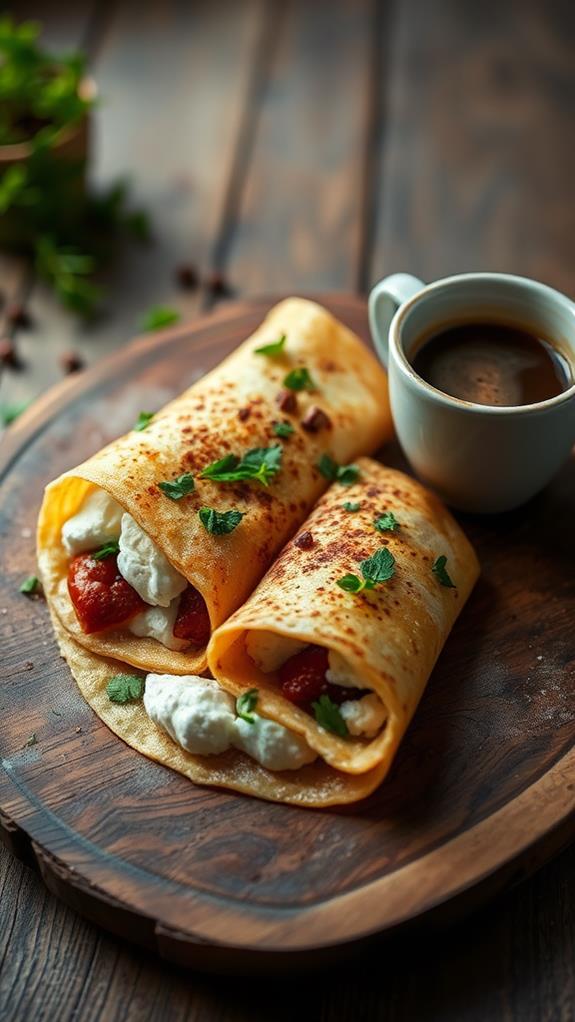
Transforming leftover ricotta into a savory breakfast can elevate your morning routine. If you’re looking to add a creamy twist to your scrambled eggs, fold some ricotta into them when they’re slightly firmer than soft. This simple technique will give your eggs a luxurious texture that’s sure to impress. For an extra touch of sophistication, serve your ricotta-infused eggs on a John Boos cutting board, which doubles as an elegant serving platter for breakfast spreads.
For those who prefer omelets, try lining the inside of your rolled omelet with ricotta. As you fold the omelet, you’ll create pockets of cheesiness that burst with flavor in every bite. This method allows you to incorporate the ricotta seamlessly into your breakfast without overpowering the other ingredients.
If you’re in the mood for something a bit different, consider using ricotta as a base for roasted vegetables. Spread a layer of ricotta on a serving platter and top it with your favorite roasted veggies for a hearty and satisfying morning meal. This combination of creamy ricotta and savory vegetables provides a balanced start to your day.
Sweet Morning Treats

While savory options abound, leftover ricotta also shines in sweet morning treats. You’ll find that this versatile cheese can elevate your breakfast game with its creamy texture and subtle flavor. One delightful option is lemon ricotta pancakes, which offer a fluffy and zesty twist on traditional flapjacks. The addition of ricotta creates a light, airy texture, while the lemon infuses a bright, invigorating taste. For best results, mix your ingredients in high-quality glass bowls that resist odors and don’t absorb flavors, ensuring the purity of your recipe.
For a more indulgent breakfast, consider Ricotta Stuffed French toast. This elevated brunch dish combines the classic comfort of French toast with a rich, creamy filling. The ricotta mixture, often enhanced with vanilla and a touch of sweetness, provides a luxurious contrast to the crispy exterior of the bread.
If you’re in the mood for something different, try your hand at ricotta gnocchi. These pillowy dumplings offer a lighter alternative to their potato-based counterparts and can be served with a variety of sweet toppings, such as fruit compotes or maple syrup. By incorporating ricotta into these sweet morning treats, you’ll transform your leftover cheese into memorable breakfast experiences.
Pasta Dish Upgrades
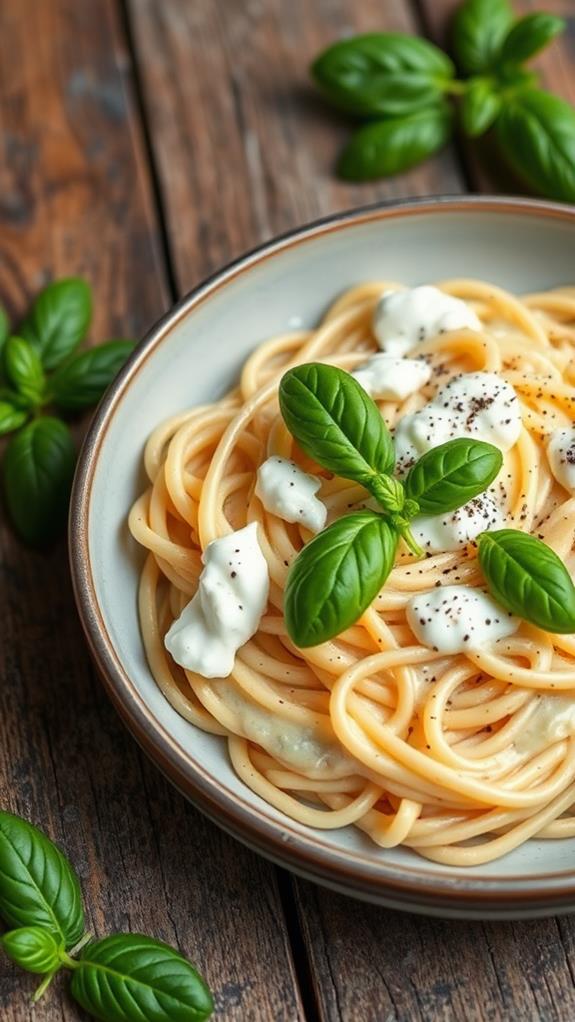
You’ll find that ricotta can elevate your pasta dishes in numerous ways. For creamy pasta sauces, mix ricotta with your favorite herbs and spices to create a luscious coating that clings to every strand. Much like cultured buttermilk in Southern cuisine, ricotta adds a tangy richness that enhances flavors and textures in Italian-inspired dishes. If you’re in the mood for stuffed pasta creations, use ricotta as a filling for ravioli, stuffed shells, or agnolotti, adding depth and richness to your homemade pasta masterpieces.
Creamy Pasta Sauces
Ricotta’s creamy texture makes it an ideal base for luxurious pasta sauces. You’ll love how easily it transforms into a velvety coating for your favorite noodles. To create a simple yet delicious ricotta pasta sauce, start by combining ricotta cheese with pasta water, grated Parmesan, and your choice of herbs. This mixture will coat your pasta evenly, resulting in a creamy ricotta cheese sauce that’s both comforting and satisfying.
For more flavor variations, consider these options:
| Base Ingredient | Flavor Addition | Herb/Spice | Protein | Vegetable |
|---|---|---|---|---|
| Ricotta | Lemon zest | Basil | Chicken | Spinach |
| Ricotta | Roasted garlic | Thyme | Shrimp | Mushrooms |
| Ricotta | Sun-dried tomatoes | Oregano | Bacon | Peas |
| Ricotta | Pesto | Parsley | Sausage | Broccoli |
| Ricotta | White wine | Sage | Tofu | Asparagus |
Experiment with these combinations to create unique and flavorful pasta dishes. Remember to adjust the sauce consistency by adding more pasta water if needed. You’ll find that ricotta-based sauces are not only creamy but also lighter than traditional heavy cream sauces, making them a versatile option for both weeknight dinners and special occasions.
Stuffed Pasta Creations
Stuffed pasta dishes offer a delightful way to upgrade your ricotta experience. When you’re making something like stuffed shells, ricotta becomes the star of the show. This versatile cheese creates pockets of creamy goodness inside your pasta, elevating the dish to new heights. You can easily fill ravioli, agnolotti, or even large pasta shells with ricotta, creating a luxurious and satisfying meal.
To take your stuffed pasta creations to the next level, consider mixing herbs, spices, or even roasted vegetables into your ricotta filling. This adds depth and complexity to the flavor profile, making each bite a unique experience. For a visually appealing presentation, try dolloping some ricotta on top of your finished pasta dish. This not only adds an extra layer of creaminess but also creates an attractive contrast against the pasta and sauce.
Roasted Vegetable Pairings
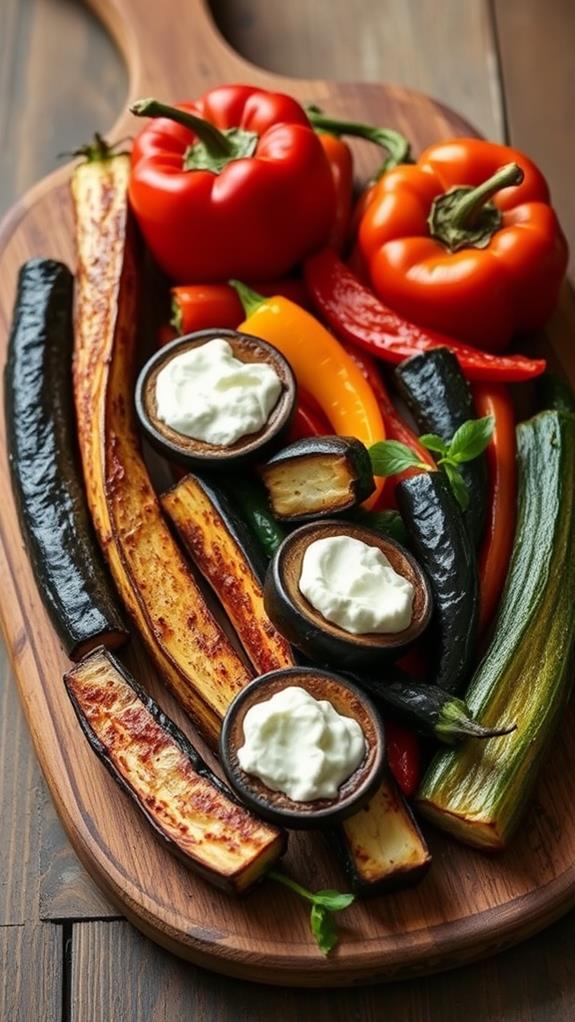
When pairing roasted vegetables with ricotta, you’ll want to ponder complementary flavor combinations and textures. You can enhance the dish’s appeal by carefully seasoning the vegetables and ricotta with salt, pepper, and herbs to bring out their natural flavors. For ideal results, consider using a versatile cast iron skillet to roast your vegetables, as it provides excellent heat distribution and retention. This method allows for perfect searing and caramelization, enhancing the overall flavor profile of your dish. To create an eye-catching presentation, spread the ricotta on a platter and artfully arrange the roasted vegetables on top, adding a drizzle of olive oil for a finishing touch.
Roasted Vegetable Combinations
Ever wondered how to elevate your roasted vegetables with leftover ricotta? You’re in luck! By making simple yet delicious combinations, you can transform your roasted veggies into gourmet dishes. Start by tossing your favorite vegetables in olive oil and roasting them to perfection.
For a colorful medley, try combining carrots, broccoli, and Brussels sprouts. Serve these over a bed of creamy ricotta for a delightful contrast in textures. If you’re in the mood for Mediterranean flavors, roast zucchini, eggplant, and bell peppers, then top with dollops of ricotta. For a comforting side dish, toss roasted sweet potatoes, red onions, and sage with ricotta.
Want to impress your guests? Create a visually appealing platter by spreading ricotta as a base and arranging roasted cauliflower, mushrooms, and cherry tomatoes on top. For a nutrient-dense option, mix roasted butternut squash and kale with ricotta, then sprinkle with toasted pine nuts. These combinations not only taste great but also provide a balanced mix of flavors and textures, making your leftover ricotta the star of the show.
Seasoning for Best Flavor
To elevate your roasted vegetable and ricotta pairings, proper seasoning is key. When working with leftover ricotta, you’ll want to enhance its natural creaminess while complementing the roasted vegetables. Start by bringing your ricotta to room temperature, making sure it’s easier to spread and incorporate with other ingredients.
Season your ricotta with a sprinkle of salt and pepper, then add fresh herbs like thyme or basil for a simple yet flavorful topping. You can also mix in a pinch of red pepper flakes or smoked paprika to add a touch of heat and smokiness. For a bright, citrusy note that cuts through the creaminess, grate some lemon zest over the top.
Don’t forget to drizzle high-quality olive oil over your ricotta-topped roasted veggies. This adds an extra layer of richness and helps marry the flavors together. By carefully selecting and combining these seasonings, you’ll transform your leftover ricotta into a delicious and sophisticated topping for your roasted vegetables, ensuring a well-balanced and flavorful dish.
Plating and Presentation
Plating perfection can elevate your roasted vegetable and ricotta dish from simple leftovers to a restaurant-worthy meal. Start by spreading a generous layer of creamy ricotta across the bottom of your serving platter or plate. This rich, velvety base will provide a delightful contrast to the caramelized vegetables you’ll place on top.
Next, arrange your roasted veggies directly on the ricotta. You can use a variety of options, such as:
- Golden-brown, crispy-edged carrots
- Tender, slightly charred cauliflower florets
- Vibrant green broccoli with crispy tips
- Perfectly roasted, fluffy-centered potatoes
Don’t forget to season the entire dish well with salt and a drizzle of high-quality olive oil. This simple step enhances the flavors and creates a cohesive, comfort food experience. The combination of creamy ricotta and savory roasted vegetables isn’t just delicious; it’s visually appealing too. The contrast in textures and colors makes for an Instagram-worthy plate that’s even better to eat. This plating method works with various roasted vegetables, allowing you to experiment with seasonal produce and create new flavor combinations.
Quick and Easy Dips
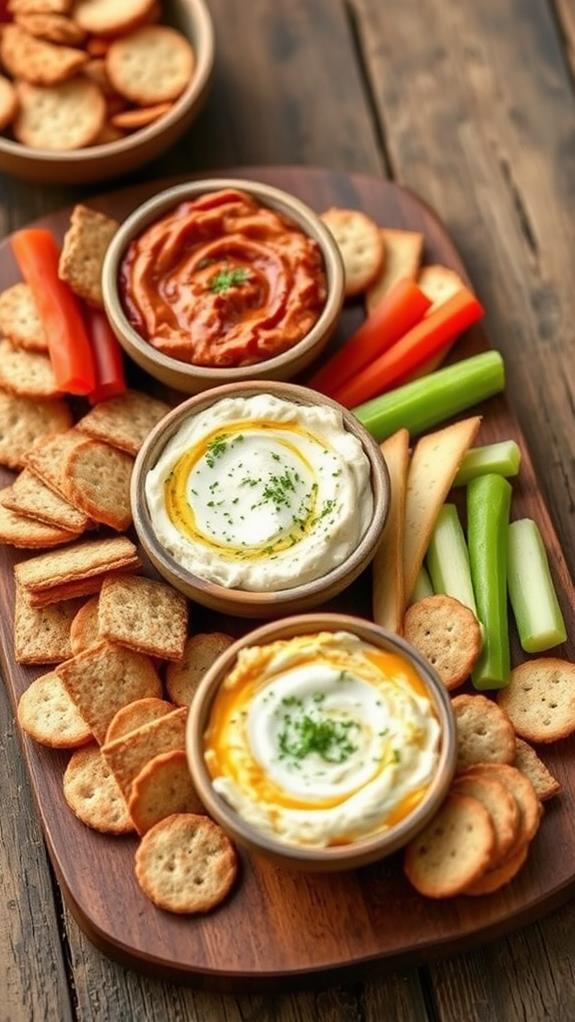
Creativity flourishes when you have leftover ricotta and a craving for quick, flavorful dips. Instead of letting that ricotta go to waste, try these easy recipes to transform it into delicious spreads. You’ll be amazed at how versatile this creamy cheese can be. To enhance your ricotta dips, consider using a versatile kitchen tool like a dual blade vegetable peeler for perfectly sliced vegetable accompaniments.
For a simple yet zesty option, mix ricotta with chile flakes, salt, black pepper, and chopped herbs. This combination creates a perfect balance of flavors that’ll elevate any snack. If you’re in the mood for something invigorating, blend ricotta with lemon juice, garlic, and parsley. This tangy dip pairs wonderfully with fresh vegetables or pita bread.
For a more vibrant option, stir ricotta with finely chopped roasted red peppers, olive oil, and crushed red pepper. The result is a colorful and versatile dip that’ll impress your guests. If you prefer a richer taste, combine ricotta with sun-dried tomatoes, basil, and a drizzle of balsamic glaze. This Mediterranean-inspired spread is perfect for crusty bread or crackers.
Lastly, for a sweet and savory twist, mix ricotta with caramelized onions, thyme, and a touch of honey. This unique combination is sure to tantalize your taste buds.
Decadent Dessert Creations
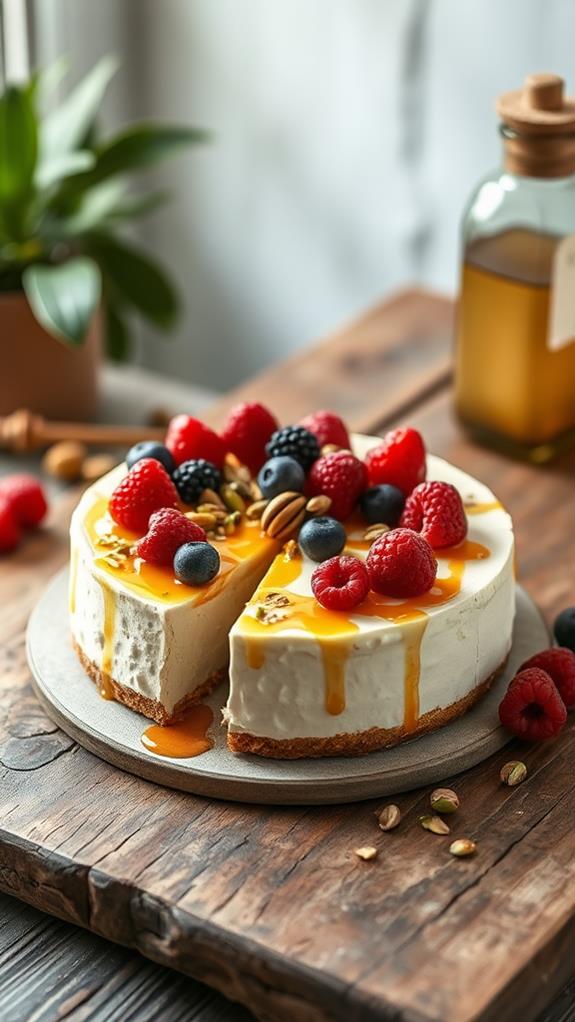
You’ll find that ricotta can elevate your desserts to new heights of indulgence. For a classic Italian treat, fill crisp cannoli shells with sweetened ricotta, chocolate chips, and a touch of vanilla extract. If you’re in the mood for something tangy and creamy, try your hand at a lemon ricotta cheesecake, which combines the smooth texture of ricotta with the bright flavors of lemon zest and juice.
Ricotta-filled Cannoli Shells
A bite of ricotta-filled cannoli transports you to the sun-drenched shores of Sicily. If you love ricotta and want to make ricotta-based desserts, transforming leftover cheese into a decadent cannoli filling is a delightful option. Simply blend the ricotta with powdered sugar, vanilla extract, and a touch of cinnamon to create a luscious mixture.
To assemble your cannoli:
- Pipe the sweetened ricotta into crisp, golden shells
- Dust with powdered sugar for a classic look
- Dip ends in mini chocolate chips for added texture
- Garnish with candied citrus peel or chopped pistachios
You can use homemade or store-bought shells for convenience. The beauty of this dessert lies in its make-ahead potential; you can fill the shells up to a day in advance, perfect for entertaining or satisfying late-night cravings. The contrast between the crunchy exterior and creamy interior creates a harmonious balance of textures and flavors. With each bite, you’ll experience the rich, velvety ricotta filling complemented by hints of vanilla, cinnamon, and lemon zest, making this classic Italian pastry an irresistible treat.
Lemon Ricotta Cheesecake
Blending the delicate sweetness of ricotta with zesty lemon creates a heavenly combination in this luscious Lemon Ricotta Cheesecake. If you’ve got extra ricotta on hand, this quick and easy dessert is the perfect way to use it up. You’ll need a springform pan, graham cracker crust, and a few simple ingredients to whip up this creamy delight.
To make the filling, mix your leftover ricotta with cream cheese, sugar, eggs, lemon zest, and juice. The ricotta adds a light, fluffy texture that sets this cheesecake apart from traditional versions. Pour the mixture into your prepared crust and bake until set. Once cooled, refrigerate for several hours to achieve the perfect consistency.
This Lemon Ricotta Cheesecake is versatile enough for various occasions. Serve it at a dinner party or enjoy it as a weeknight treat. The bright, citrusy flavor pairs well with fresh berries or a dollop of whipped cream. You can also experiment with different citrus fruits like lime or orange for unique variations on this classic dessert.
Stuffed Shells and Lasagna
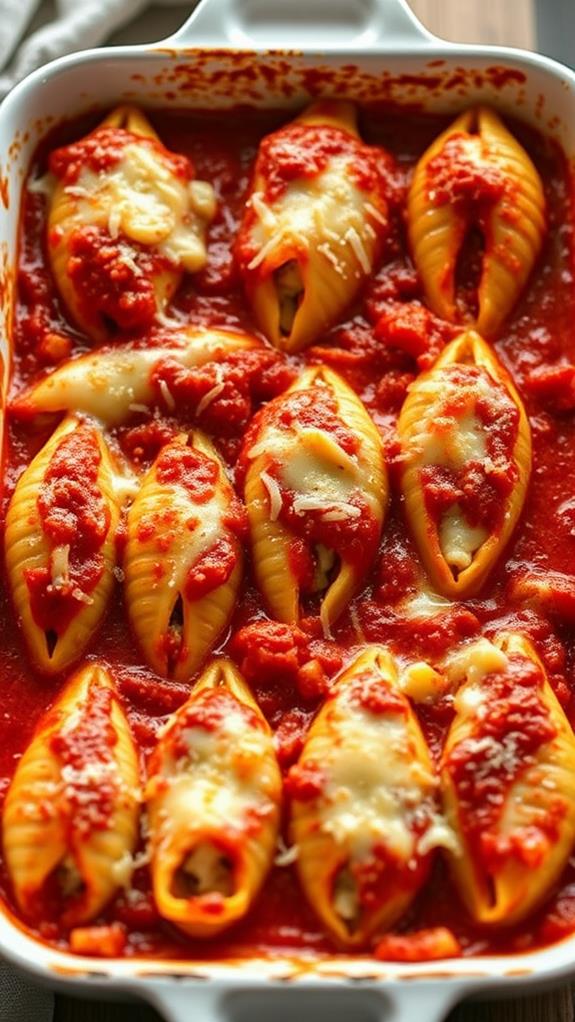
Stuffed shells and lasagna are classic Italian-American comfort foods that make excellent use of leftover ricotta. These dishes allow you to transform your Italian ricotta into hearty, satisfying meals that’ll please the whole family. For stuffed shells, mix your ricotta with spinach, herbs, and seasonings to create a flavorful filling. Spoon this mixture into large pasta shells, arrange them in a baking dish, and cover with tomato sauce and mozzarella cheese before baking.
Lasagna offers another delicious way to use up ricotta. Layer lasagna noodles with a mixture of ricotta, ground beef or Italian sausage, and tomato sauce. Top it all with mozzarella for that irresistible cheesy finish. Both dishes can be prepared in advance, making them perfect for busy weeknights or entertaining.
To create vivid imagery, imagine:
- Steam rising from a bubbling dish of golden-brown stuffed shells
- A fork cutting through layers of lasagna, revealing a creamy ricotta filling
- Strings of melted mozzarella stretching as you serve a portion
- A spatula scooping out a generous helping of herbed ricotta-filled pasta
These ricotta-based dishes are not only delicious but also versatile. You can experiment with different herbs, cheeses, and sauces to create your own unique variations.
Frittatas and Quiches
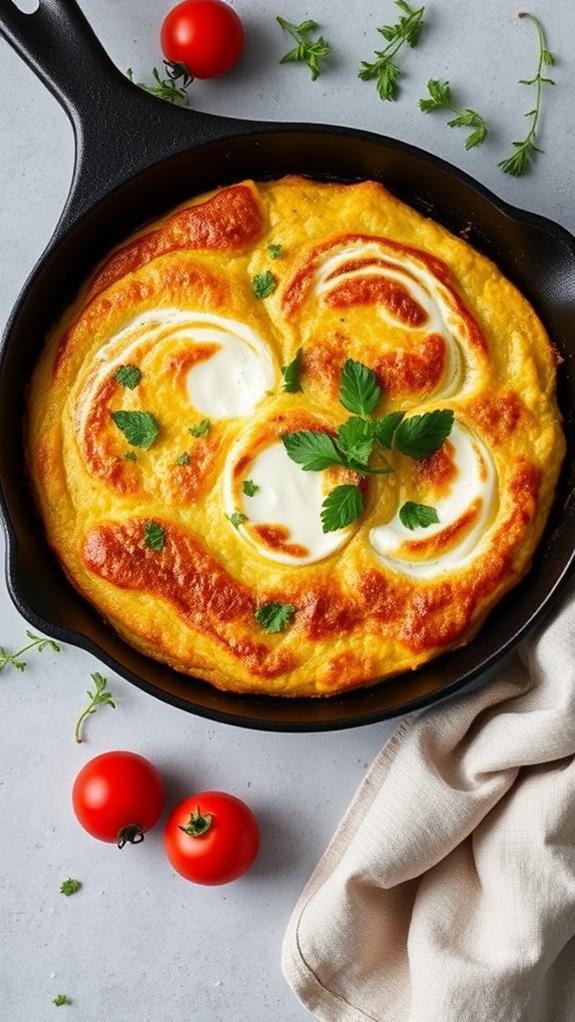
Frittatas and quiches provide perfect platforms for using up leftover ricotta cheese. These versatile egg dishes can easily incorporate ricotta, enhancing their texture and flavor. For frittatas, you’ve got a couple of options. You can fold ricotta into your scrambled eggs just before they set, creating pockets of cheesiness throughout the dish. Alternatively, try incorporating ricotta directly into the frittata mixture for a consistently creamy texture.
If you’re making a rolled omelet, consider using ricotta as a filling. Spread a layer of the cheese on the inside of the omelet before rolling it up, resulting in a delightful breakfast treat. For a more substantial meal, prepare a pasta frittata and dollop ricotta on top before serving. This not only adds visual appeal but also introduces a lovely contrast in textures.
When it comes to quiches, ricotta works wonderfully as a filling. Mix it into your egg base to create a rich, creamy custard that’ll set beautifully when baked. The ricotta adds depth to the quiche’s flavor profile while contributing to its smooth, velvety texture.
Homemade Pizza Toppings

While frittatas and quiches offer excellent ways to use leftover ricotta, homemade pizza presents another delicious opportunity. You’ll find that ricotta’s creamy texture and mild flavor make it a versatile topping for your next pizza night. Start by spreading a layer of ricotta over your pizza crust as a base. This creates a smooth foundation for other toppings and adds a rich, velvety element to your pie.
For a classic white pizza, combine the ricotta with grated Parmesan and a sprinkle of dried oregano. This simple combination lets the ricotta shine as the star ingredient. If you’re looking for a more complex flavor profile, try topping your ricotta base with:
- Sautéed mushrooms with garlic and thyme
- Caramelized onions and crumbled bacon
- Fresh spinach and sliced cherry tomatoes
- Roasted red peppers and kalamata olives
For a rustic touch, try dolloping small spoonfuls of ricotta on top of your pizza before baking. This technique, known as “ricotta on top,” creates pockets of creamy goodness throughout your pie. Alternatively, use the ricotta as a filling for stuffed crust, adding an unexpected twist to your homemade pizza.
Creamy Soups and Sauces

Leftover ricotta can transform your soups and sauces into creamy delights. When you’re looking to add richness and depth to your recipes, ricotta is an excellent option. Many recipes that call for ricotta can be adapted to use your leftovers, ensuring nothing goes to waste.
For soups, try stirring a dollop of ricotta into your favorite vegetable or tomato-based soup just before serving. It’ll melt slightly, creating a velvety texture that’s fun to eat. You can also blend ricotta into pureed soups for a smoother consistency. When making sauces, incorporate ricotta to create a luscious, creamy base. It’s particularly effective in pasta sauces, where it can replace or complement heavy cream.
To use ricotta in sauces, whisk it into your base ingredients until smooth. For a quick and easy sauce, mix ricotta with herbs, lemon zest, and a bit of pasta water for a light, fresh coating for your noodles. Remember to season well, as ricotta can be mild in flavor. By experimenting with leftover ricotta in your soups and sauces, you’ll discover new ways to elevate your dishes.
Frequently Asked Questions
What Can I Do With a Lot of Ricotta Cheese?
If you’ve got a surplus of ricotta cheese, you’ve got plenty of delicious options. You can incorporate it into egg dishes like quiches or frittatas for added creaminess. Use it as a filling for pasta dishes such as ravioli or stuffed shells. For a simple dessert, pair it with fresh fruit and honey. Spread it on toast with toppings for a tasty appetizer. You can also mix it with herbs and olive oil to create a versatile dip or spread.
Can I Freeze Ricotta Cheese for Later Use?
Imagine you’ve just made a delicious lasagna but have half a container of ricotta left. Don’t worry, you can freeze it! Yes, you can freeze ricotta cheese for later use. It’s best to store it in an airtight container lined with plastic wrap, leaving some space for expansion. Frozen ricotta lasts up to 3 months and works well in cooked dishes. When thawing, place it in the refrigerator overnight. Remember, the texture might become slightly grainy, so it’s ideal for baked recipes.
How Long Does Ricotta Cheese Last in the Refrigerator?
When you store ricotta cheese properly in your refrigerator, it can last 5-7 days. However, this timeframe can vary depending on a few factors. If you haven’t opened the package yet, your ricotta might stay fresh for up to 2 weeks past its sell-by date. Once you’ve opened it, though, you’ll want to use it within 3-5 days. Always check for signs of spoilage, such as mold or discoloration, before consuming. If you’re unsure, it’s best to err on the side of caution.
What Can I Do With Leftover Ricotta Liquid?
Did you know that over 90% of ricotta’s liquid is water? Don’t let that leftover ricotta liquid go to waste! You can use it to make delicious pancakes, waffles, or crepes for breakfast. It’s also great for adding moisture to baked goods like muffins or quick breads. Try incorporating it into soups or stews for a creamy texture, or mix it into dips and dressings. You can even freeze it in ice cube trays for future use in recipes.





